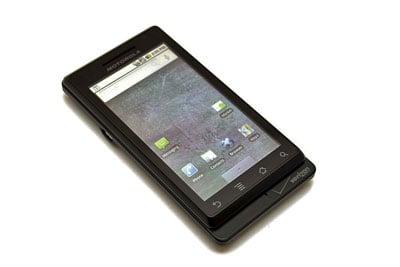Motorola DROID Does? A Deep Dive Look
Introduction

There's no denying that the Motorola DROID is receiving a lot of hype. Not only is this phone a big deal for Motorola, who has struggled to produce widely successful handsets since the famous RAZR flip phone, but the DROID is also the first handset that will be released as part of a partnership between Google and Verizon Wireless. Combine this with the fact that the Motorola DROID has been called Verizon Wireless' "iPhone killer" and you can see why there's so much buzz surrounding this smartphone.
The Motorola DROID has a lot of interesting and cool features that will make it a <HOT> item, including Android 2.0, the latest version of the open-source Google operating system. The DROID also has a high-resolution screen, plenty of customization options, and a thin design along with a full QWERTY keyboard.
For some users, the fact that the DROID is on Verizon Wireless's network will also be a key factor to consider. Depending on where you live, Verizon Wireless may provide some of the best coverage available. Since Verizon Wireless' entire network offers 3G coverage, one definite benefit is that whenever you're in a covered area, you'll also have a high-speed data connection. As Verizon Wireless has pointed out in recent commercials, AT&T hasn't fully upgraded its network to 3G.
Given that Verizon Wireless has already gone head-to-head with the iPhone in its DROID commercials, it's hard not to make direct comparisons between these two phones. For starters, they're both relatively equal in size—the DROID is just a hair thicker than the iPhone 3GS (13.7mm vs. 12.33mm) with a body that's narrower than the iPhone. On the inside, the DROID uses an Arm Cortex A8 processor clocked at 550 MHz. This CPU is similar to the chip inside of the iPhone 3GS and Palm Pre.
In addition, as Verizon Wireless commercials point out, the DROID offers some features and functionality that the iPhone does not, including the ability to take pictures in the dark, a hardware keyboard, the ability to run simultaneous applications, a 5-megapixel camera, the ability to run widgets, interchangeable batteries, and the fact that the Android platform allows for open development. While these all sound like cool features to have, are they enough to convince users the DROID is better than the iPhone or any other smartphone on the market today? Read on in the following pages as we take a closer look at the Motorola DROID.







